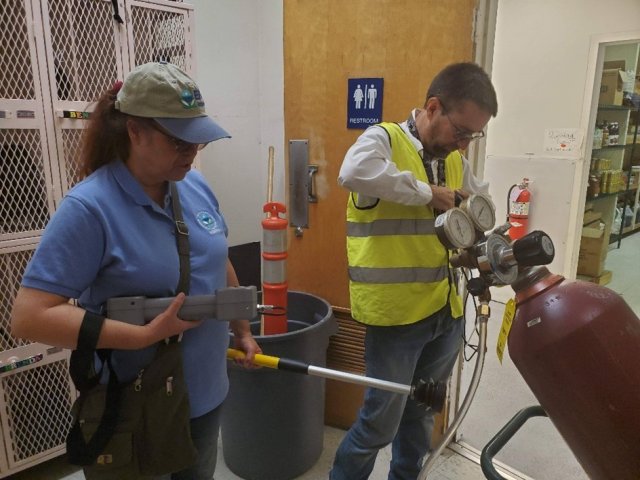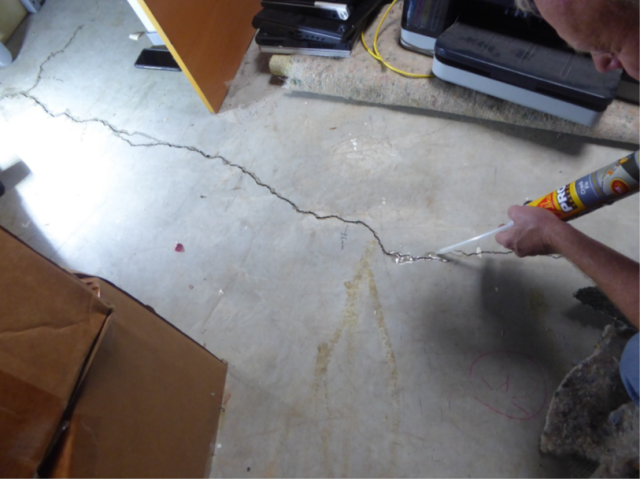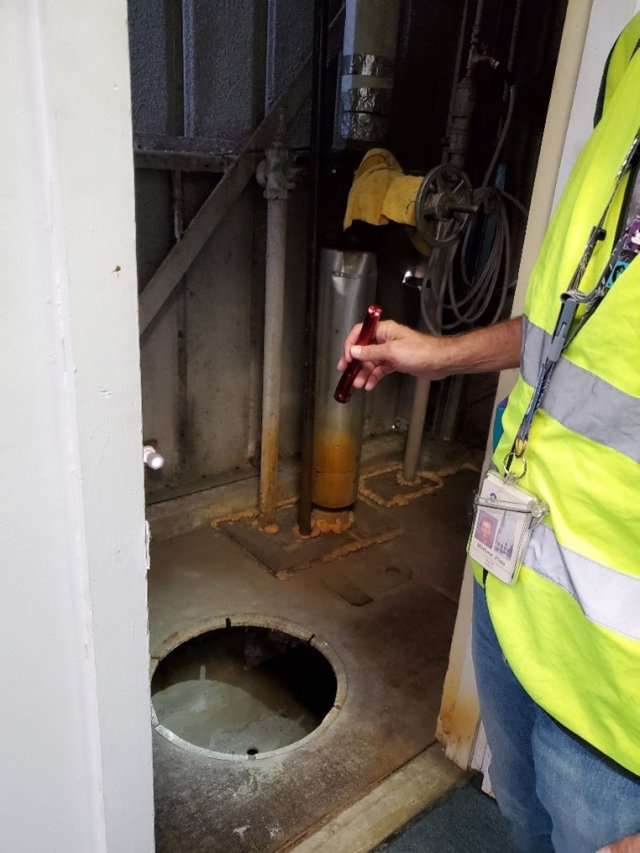Working to Taper Vapors, the Invisible Intruder
Published June 7, 2023

People are well prepared for all kinds of “intruders.” We close our doors and windows so the neighborhood squirrels won’t appear at our kitchen table, and we install doorbells and cameras to alert us to potential guests. A different kind of intruder we don’t always consider, however, is invisible to the eye and can have health impacts: chemical vapors.
Vapor intrusion occurs when chemical fumes, or vapors, move from a subsurface source (such as the ground or groundwater) to enter buildings through cracks, ducts, vents, drains, permeable building materials, or other structural features. These chemicals are often volatile organic compounds, better known as VOCs, that come from a variety of sources including vehicles, cooking and dry cleaning. It’s their volatility that makes VOCs especially able to migrate through vapor intrusion pathways. Exposure to VOCs can cause a variety of health effects including respiratory irritation, headaches, nausea, liver, kidney, and central nervous system damage. They may also be suspected or known carcinogens.
Buildings, even ones that are built to be identical, each have their own unique features that can affect airflow and open potential pathways for vapor intrusion. For this reason, vapor intrusion happens differently from building to building both in terms of the chemical composition of the vapors and how they flow. That makes vapor intrusion difficult to detect and mitigate.

EPA researchers are working to better understand how vapor intrusion occurs and how it can be prevented. EPA scientists recently conducted a study evaluating different points of entry in sets of buildings near Los Angeles and the San Francisco Bay Area where vapor intrusion issues have been previously confirmed.
The researchers used different types of field equipment to monitor vapor intrusion at these sites, including infrared cameras to detect temperature differences, passive air samplers to collect chemical composition information over time, and devices to measure differences in pressure between locations. Pressure is important because differences can have significant impacts on airflow. Think of the sensation felt in one’s ears when a single car window is down or how opening windows on opposite sides of a room can increase airflow. Pressure differences can create a vacuum effect pulling the flow of air out of a room, or in an over-pressurization effect, pulling air into a room.
“High-sensitivity, high-resolution pressure testing is a powerful tool to assess when pathway vapor entry is occuring and aids in optimizing mitigation of vapor intrusion,” said EPA air quality researcher Mathew Plate.
EPA researchers confirmed multiple pathways where vapor intrusion was occuring in the buildings, but other pathways remained uncertain.

After identifying specific vapor intrusion pathways, the research team used different techniques to mitigate or stop the intrusion. One method involved sealing visible cracks with epoxy to prevent vapors from flowing through them, but this typically only helps part of the problem. Sealing cracks also allowed researchers to evaluate some of the uncertain pathways—if sealing a crack in an area had no impact on the measurements the researchers took earlier (including VOCs and air pressure), then that site was probably not a site of vapor intrusion.
Another method involved retrofitting floor drains with specially designed valves to allow water flow through them while preventing vapors from moving upward into the building. Water, in combination with gravity, opens the rubber valve to allow for draining, but the special valve prevents many of the “light as air” vapors from passing through. Vapors present underground that would normally flow through drainpipe to the surface are blocked by the valve without diminishing the function of the drain. This method can be a more long-term solution since the drain valves don’t degrade as quickly as epoxy and can mitigate vapor intrusion from larger areas. The research team then used their monitoring techniques and equipment to evaluate the effectiveness of these mitigation approaches.
The mitigation techniques used in this study all appeared to be effective at preventing vapor intrusion, at least in the short-term. While an epoxy seal may be temporarily effective, more research is needed to evaluate the long-term effectiveness of this approach. This method may also prove more useful when paired with other measures, such as the drain valves. By using multiple mitigation methods, one can limit as many potential pathways as possible since the epoxy and drain valves serve to stop vapors from different sources.
There is no one-size-fits-all approach for evaluating vapor intrusion. Each building is wildly different and identifying appropriate and effective mitigation techniques can be time consuming—with results often not being immediately apparent.
“Chemical vapors entering buildings – including homes – from underground contamination can be a health concern,” said Martha Guzman, Regional Administrator for EPA Region 9. “This innovative research will help site managers better evaluate possible vapor entry points and support more effective methods for preventing exposure.” This effort will inform future research into techniques for identifying additional vapor intrusion pathways and finding long term mitigation approaches to better protect human health.
Learn More:
